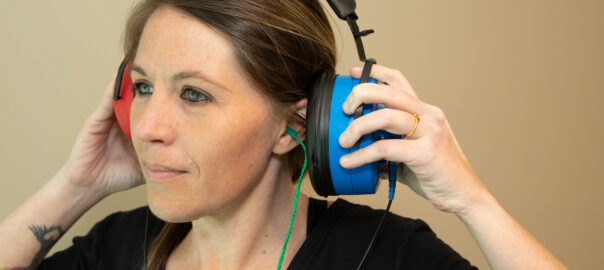Title: Protecting Our Troops: The Vital Role of Fit Testing in Preserving Hearing and Ensuring Readiness
In a world where every decibel counts, the protection of our military personnel’s hearing is paramount. The recent article titled “How Fit Testing Saves Hearing, Ensures Readiness” sheds light on the indispensable practice of fit testing in safeguarding the auditory health of our armed forces. Let’s delve into the key takeaways of this insightful piece and why it’s essential for both military members and civilians alike to understand its significance.
First and foremost, the article emphasizes the critical role of fit testing in preserving hearing. Fit testing involves assessing the effectiveness of hearing protection devices (HPDs) worn by military personnel to mitigate the risks of noise-induced hearing loss (NIHL) and other auditory impairments. By ensuring that HPDs fit properly and provide adequate protection, fit testing significantly reduces the likelihood of hearing damage in noisy environments such as combat zones, training facilities, and aircraft carriers.
Moreover, fit testing plays a pivotal role in maintaining military readiness. Hearing is not only vital for situational awareness and communication on the battlefield but also for overall operational effectiveness. Unprotected exposure to high noise levels can compromise a soldier’s ability to detect auditory cues, communicate with fellow troops, and execute mission-critical tasks. By implementing rigorous fit testing protocols, the military can enhance the readiness and operational capabilities of its personnel, thereby safeguarding national security interests.
Furthermore, the article highlights the technological advancements and innovative approaches in fit testing methodologies. From traditional methods like real-ear attenuation testing (REAT) to cutting-edge solutions such as three-dimensional (3D) scanning and digital modeling, the evolution of fit testing techniques ensures greater precision, efficiency, and comfort for military personnel. By harnessing the power of data-driven insights and personalized solutions, the military can tailor-fit hearing protection strategies to individual needs and optimize the effectiveness of HPDs in diverse operational environments.
In essence, the article serves as a poignant reminder of the ongoing commitment to prioritize the health, safety, and readiness of our troops. By embracing fit testing as a cornerstone of hearing conservation programs, the military reaffirms its dedication to protecting the well-being of those who serve our nation. However, the responsibility to raise awareness and advocate for the adoption of fit testing practices extends beyond the military sphere.
As civilians, we must recognize the broader implications of fit testing in occupational settings, recreational activities, and everyday life. Whether it’s construction workers exposed to heavy machinery, concertgoers immersed in loud music, or individuals using power tools at home, the risk of noise-induced hearing damage is ever-present. By promoting education, advocacy, and policy initiatives that prioritize fit testing and hearing protection across all sectors, we can collectively safeguard the auditory health of our communities and future generations.
In conclusion, the article underscores the indispensable role of fit testing in preserving hearing and ensuring readiness among military personnel. By embracing technological innovations, rigorous protocols, and a commitment to proactive prevention, the military sets a precedent for excellence in hearing conservation. As we reflect on the insights shared in this article, let us not only acknowledge the significance of fit testing but also strive to promote a culture of hearing protection and well-being in all aspects of our lives. To delve deeper into this crucial topic and explore firsthand accounts and expert perspectives, I encourage you to read the full blog post. Together, let’s amplify the message of protecting our troops and preserving the precious gift of hearing for generations to come.
